Info
Subfamily: Panicoideae
Genus etymology: Digitaria = "having fingers" [Latin] refering to the inflorescence structure
Species etymology: fuscescens = "turning dark brownish" [Latin] refering to the fertile lemma in fruit
Photosynthetic type: C4 (warm season)
Nativity: naturalized - accidental
First recorded in Hawaiʻi: 1916
Map
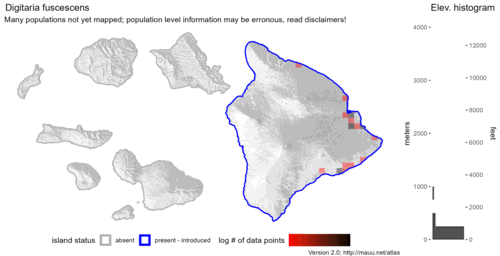
Inflorescence

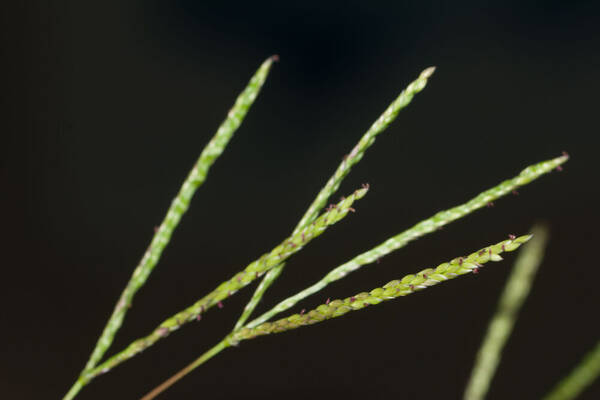
Plant
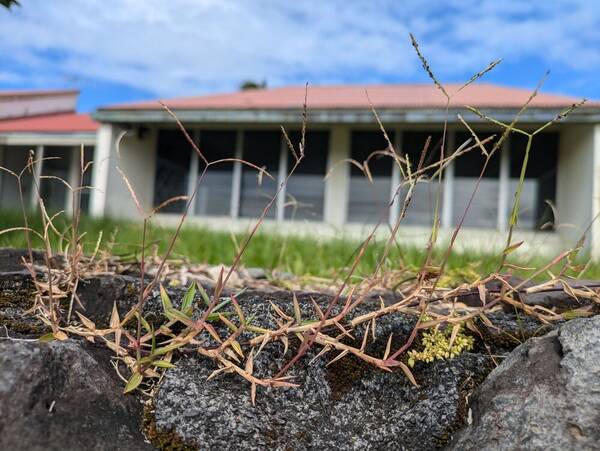
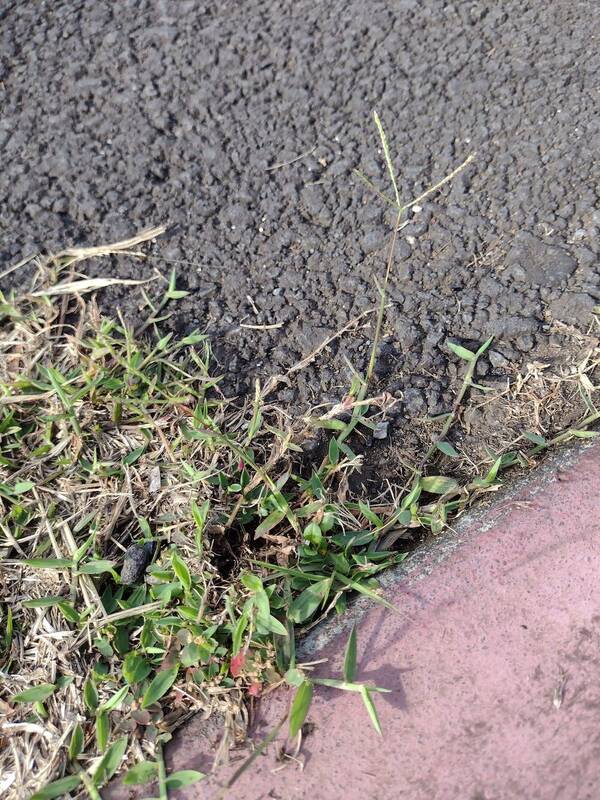
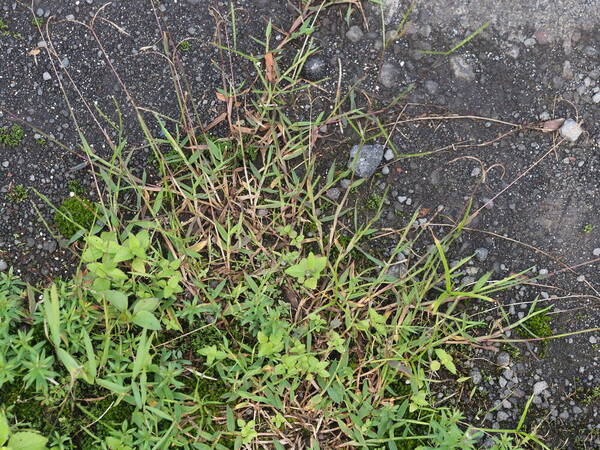
Habit
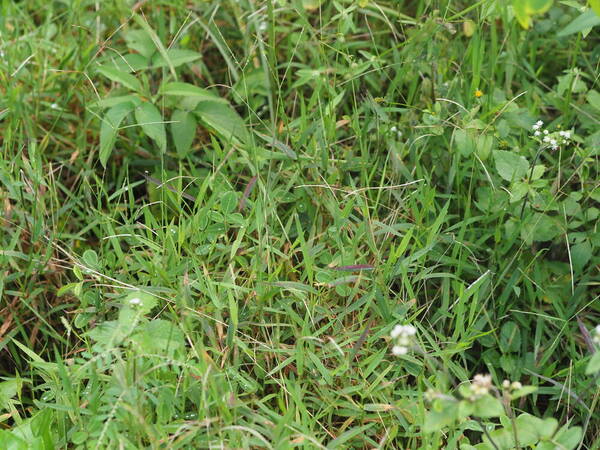
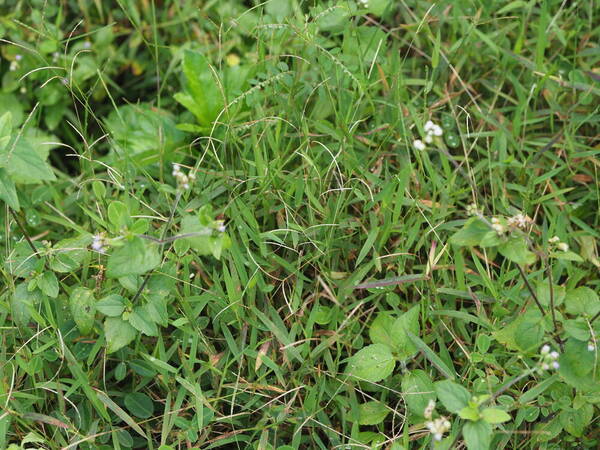
Spikelets
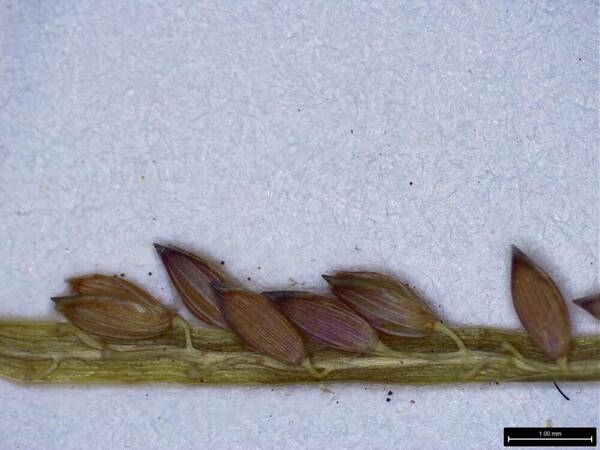
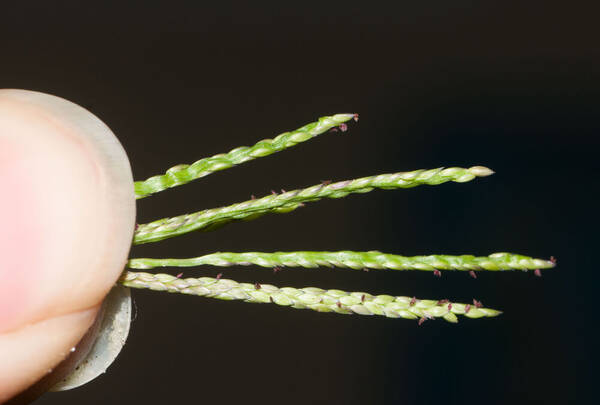
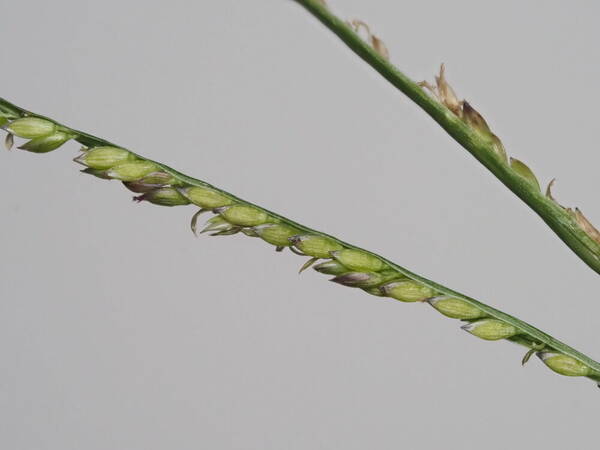
Description
Habit: Annual; mat forming. Culms rambling; 4-30 cm long. Ligule an eciliate membrane. Leaf-blades 1-5 cm long; 1-4 mm wide. Inflorescences: Inflorescence composed of racemes. Racemes 2-5; paired, or digitate; unilateral; 1-7 cm long. Rhachis broadly winged; with rounded midrib. Spikelets in threes. Fertile spikelets pedicelled; 3 in the cluster. Pedicels unequal. Spikelets: Spikelets comprising 1 basal sterile florets; 1 fertile florets; without rhachilla extension. Spikelets elliptic; dorsally compressed; 1.2-1.6 mm long; falling entire. Fertile Spikelets: Spikelets comprising 1 basal sterile florets; 1 fertile florets; without rhachilla extension. Spikelets elliptic; dorsally compressed; 1.2-1.6 mm long; falling entire. Glumes: Glumes one the lower absent or obscure; reaching apex of florets; thinner than fertile lemma. Upper glume elliptic; 1 length of spikelet; membranous; without keels; (3-)5 -veined. Upper glume surface glabrous. Upper glume apex acute. Florets: Basal sterile florets barren; without significant palea. Lemma of lower sterile floret elliptic; 1 length of spikelet; membranous; 7 -veined; glabrous; acute. Fertile lemma elliptic; 1.2-1.6 mm long; cartilaginous; much thinner on margins; pallid, or light brown; without keel. Lemma margins flat; covering most of palea. Lemma apex acute. Palea cartilaginous. Distribution: Africa: west tropical, west-central tropical, east tropical, and western Indian ocean. Asia-tropical: India, Indo-China, Malesia, and Papuasia. Pacific: southwestern, south-central, northwestern, and north-central. South America: Mesoamericana, northern South America, western South America, Brazil, and southern South America.
(Description source: Clayton, W.D., Vorontsova, M.S., Harman, K.T. and Williamson, H. (2006 onwards). GrassBase - The Online World Grass Flora. Available at https://powo.science.kew.org )
Annuals; culms ascending from a creeping base, 4-30 cm tall. Sheaths glabrous, rarely with scattered hairs; ligule 0.5-2 mm long, truncate, erose; blades 1-5 cm long, 1-4 mm wide. Inflorescence composed of 2(3) digitate racemes, the racemes 1-7 cm long; spikelets ternate on a ribbon-like winged rachis, narrowly ovate-elliptic, 1.2- 1.6 mm long; first ghume a minute hyaline rim or absent, second glume as long as the spikelet, (3)5-nerved, glabrous; first lemma as long as the spikelet, 7-nerved, glabrous; second lemma yellowish to brownish, as long as the spikelet, apex often bluish at anthesis, acuminate; palea enclosed within lemma, and similar in texture and color to it. Caryopsis ellipsoid, pale brown. [2n = 1531 18, 36.]
(Description source: O’Connor, P.J. 1990. Poaceae, pp. 1481–1604. In: Wagner W.L., Herbst D.R. & Sohmer S.H. (eds.)., Manual of the flowering plant of Hawaiʻi. Vol. 2. University of Hawaii Press & Bishop Museum Press, Honolulu )